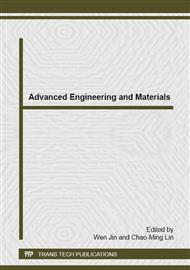p.118
p.124
p.129
p.135
p.139
p.149
p.154
p.160
p.166
Accelerated and Natural Weathering of Wood-Polypropylene Composites Containing Pigments
Abstract:
In general, wood-polymer composites are vulnerable to weathering factors such as UV radiation, moisture, freeze-thaw action. Weathering can cause discoloration, chalking, dimensional change, and loss of mechanical properties of wood-polymer composites. This comparative study was focused on weatherability of wood–polypropylene composites made with and without pigments. Two types of inorganic pigments were applied: carbon black master-batch and synthetic iron oxide. Wood-polypropylene composite made without pigment was used as a reference. Also, composites prepared with addition of wollastonite were tested. The composite samples were exposed to outdoor weathering and in a parallel the accelerated UV weathering was conducted in xenon weathering chamber for the 2000 hours. The colour change was estimated by spectrophotometric method, and the change of Charpy impact strength after weathering was determined. The surface morphology was studied with scanning electron microscopy (SEM). The addition of pigments decreased the lightness of non-weathered composites. The change of lightness and total colour change of weathered composites were affected a lot by type of pigment and method of weathering. As, expected wood-polypropylene composite made with carbon black showed the best results in colour stability of composites exposed to weathering. SEM showed that accelerated weathering in the xenon chamber caused more significant changes in the morphology of the polymer surface layer of the composites than outdoor weathering. Charpy impact strength of all studied composites was found to retain after 2000 hours of outdoor weathering, although accelerated weathering caused significant reduction of Charpy impact strength of these composites.
Info:
Periodical:
Pages:
139-145
Citation:
Online since:
December 2014
Authors:
Keywords:
Price:
Сopyright:
© 2015 Trans Tech Publications Ltd. All Rights Reserved
Share:
Citation:


